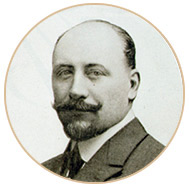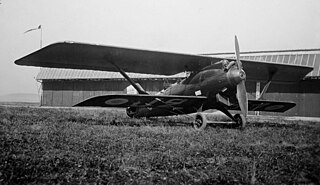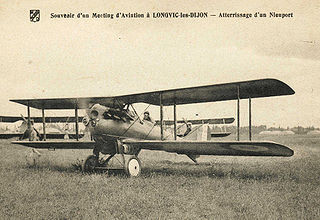
The 12Z, designated Type 89 by the company, was the final evolution of the series of Hispano-Suiza V-12 aircraft engines. The Z model had just entered production when France fell to the Germans during World War II. A small number were produced during the war but the German occupation government would not allow full-scale production to start. After the war small numbers were built to equip new designs, but the rapid introduction of the jet engine ended further development.

Hispano-Suiza is a Spanish automotive–engineering company and, after World War I, a French aviation engine and components manufacturer. It was founded in 1904 by Swiss engineer Marc Birkigt and Spanish investors. It is best known for its pre-World War II luxury cars and aviation engines. In 1923, its French subsidiary became a semi-autonomous partnership with the Spanish parent company. In 1946, the Spanish parent company sold all of its Spanish automotive assets to Enasa, a Spanish state-owned vehicle manufacturer. In 1968, the French arm was taken over by aerospace company Snecma, now part of the French Safran Group, and the Spanish Peralada Group.

Marc Birkigt was a Swiss engineer, automotive and aviation pioneer, founder of Hispano Suiza in 1904.

The Abadal was a Spanish car manufactured between 1912 and 1923, named after Francisco Abadal. Considered a fast luxury car, it was closely patterned on the Hispano-Suiza and offered in two models. One had a 3104 cc four-cylinder engine while the other had a 4521 cc six-cylinder engine.

The Latécoère 28 was a successful French long-haul mail plane and passenger airliner of the 1930s. It was the main-stay of Air France's predecessor, Aéropostale in its efforts to establish intercontinental air mail services and support French colonialism and French cultural influence between the wars.

The Hispano-Suiza 8 was a water-cooled V8 SOHC aero engine introduced by Hispano-Suiza in 1914, and was the most commonly used liquid-cooled engine in the aircraft of the Entente Powers during the First World War. The original Hispano-Suiza 8A was rated at 140 hp (100 kW) and the later, larger displacement Hispano-Suiza 8F reached 330 hp (250 kW).

The Hispano-Suiza H6 is a luxury car that was produced by Hispano-Suiza, mostly in France. Introduced at the 1919 Paris Motor Show, the H6 was produced until 1933. Roughly 2,350 H6, H6B, and H6C cars were produced in total.

The Breguet 19 was a light bomber and reconnaissance aircraft, also used for long-distance flights, designed by the French Breguet company and produced from 1924.
Hispano-Argentina was an Argentine automotive and engineering company that manufactured vehicles, aircraft, machinery, weaponry, and parts for public works.

Pic-Pic was a Swiss automobile manufactured in Geneva from 1906 to 1924. They were produced by the Piccard-Pictet Company until 1920, and by Gnome et Rhône from 1920 until the demise of the marque in 1924.

The ANF Les Mureaux 110 and its derivatives were a family of French reconnaissance aircraft developed in the 1930s. They were all-metal, parasol-wing monoplanes that seated the pilot and observer in tandem open cockpits. The aircraft were widely used in the Battle of France, but were all scrapped soon thereafter.

The Nieuport-Delage NiD.29 was a French single-seat biplane fighter designed and built by Nieuport-Delage for the French Air Force.
The Renard Epervier was a Belgian prototype single-seat all-metal fighter monoplane designed by Alfred Renard at the Societé Anonyme Avions et Moteurs Renard for a government-sponsored design contest in 1928. The Epervier Type 2 was built and flown in 1928, by Belgian aircraft manufacturer Stampe et Vertongen. It carried an armament of two synchronised 7.7mm guns and was lost in September 1928 after failing to recover from a flat spin. A second prototype, the Epervier Type 2bis, introduced revised streamlined fairings for the cantilever mainwheel legs, mainwheel spats and cylinder aft-fairings and was built by SABCA.

The Nieuport-Delage NiD 42 was a fighter aircraft built in France in the early 1920s, the first in a family of designs that would form the backbone of the French fighter force over the next decade.

The Hispano-Suiza J12 is a luxury automobile that was made by Hispano-Suiza in France from 1931 to 1938. It was the largest and most expensive car ever built by Hispano-Suiza. It replaced the Hispano-Suiza H6. The J12 was only available as a chassis, buyers having to arrange with an outside coachbuilder to integrate a body.

In 2015 Spain produced 2.7 million cars which made it the 8th largest automobile producer country in the world and the 2nd largest car manufacturer in Europe after Germany. The forecast as of 2016 was to produce a total of 2.8 million vehicles from which about 80% is for export. During the first half of 2016, with exports valued over 24,000 million euros over that period, the automotive industry accounted for 18.9% of the total Spanish exports.

The Hispano Suiza E-30, later renamed Hispano E-30, was designed in Spain in 1930 as a multi-purpose intermediate trainer. It was a single engine, parasol wing monoplane. About 25 served with the Spanish armed forces until 1945.
Hispano-Suiza piston aero-engines were predominantly piston engines produced by Hispano-Suiza in France, Spain, and under licence in the United Kingdom, the United States and Russia from the First World War through to the 1950s. Development of these engines started with the very successful V-8 engines which introduced many new features which ensured the success of the Hispano-Suiza line.

Pierre Forgeot was a French lawyer, politician and businessman who was involved in issues of war damages during and after World War I (1914–18). He was Minister of Public Works in 1928–29. After leaving politics in 1936, he was administrator of the French arm of Hispano-Suiza, the automobile and armaments manufacturer.

The Hispano-Suiza H6B Dubonnet Xenia is a one-off luxury car made by Spanish automobile manufacturer Hispano-Suiza for French pilot and racing car driver André Dubonnet in 1938. The car was built on the chassis of the Hispano-Suiza H6B, however it uses the larger, more powerful engine from the H6C and an entirely new body design by luxury coachbuilder Jacques Saoutchik.

















